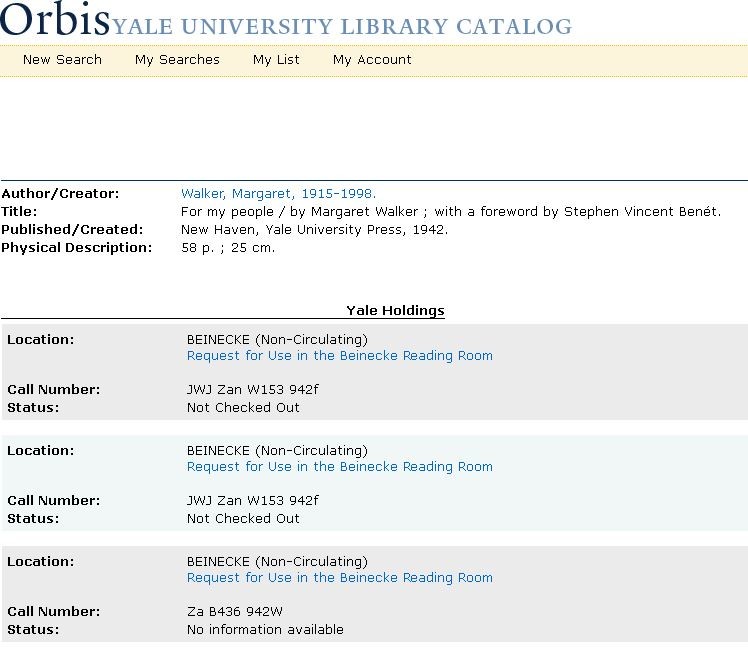Books and some other printed materials in the in the Yale Collection of American Literature and the James Weldon Johnson Memorial Collection (YCAL & JWJ) are typically cataloged based on the author of the work using a detailed classing system specific to the collection. Even a cursory look at the Beinecke Library’s Online Cataloging Manual for the collections (SEE: YCAL Classification & JWJ Classification) will give researchers insight into the ways our call numbers reveal the nature of any single work and the ways they point to useful information for understanding works in the context of a writer’s oeuvre, a work’s reception over time, and the relational context of writing communities. The JWJ Collection classing scheme is derived from the YCAL scheme described below; see specific JWJ Collection examples online here: JWJ Classification.
The basics of the YCAL and JWJ classifications are simple: the first line or part of the call number is from the “Old Yale” classification scheme where “Z” meant rare material and the letter “a” was chosen to represent American literature. The first line also includes a chronological subdivision: Za Authors writing predominantly before 1950; Zab Authors writing predominantly from 1950-1999; Zac Authors writing predominantly from 2000-2049.
The second line or part is the author’s Cutter number (derived from C.A. Cutter’s three-figure author table).
The third line or part is the last three digits of the date of the first edition followed by the initial letter of the title.
For example:
Eliot, T.S. The waste land, 1922 Call Number Za EL466 922W
Za Wrote predominantly before 1950
EL466 Eliot’s author number
922W Year of publication for the original edition followed by initial letter of title
Call numbers may also include a letter at the beginning of the third line or part which indicates that the book in question is an author’s collected works, a translation, a biography, from a writer’s library and various other publication categories.
Careful review of the Beinecke Library’s online Cataloging Manual will provide researchers with information useful for at-a-glance review of call numbers and may also suggest rich avenues for research.
Guides to searching for books from a writer’s library, translations, and for inscribed copies of books are (or soon will be) available on our YCAL-JWJ Ready Reference page.
